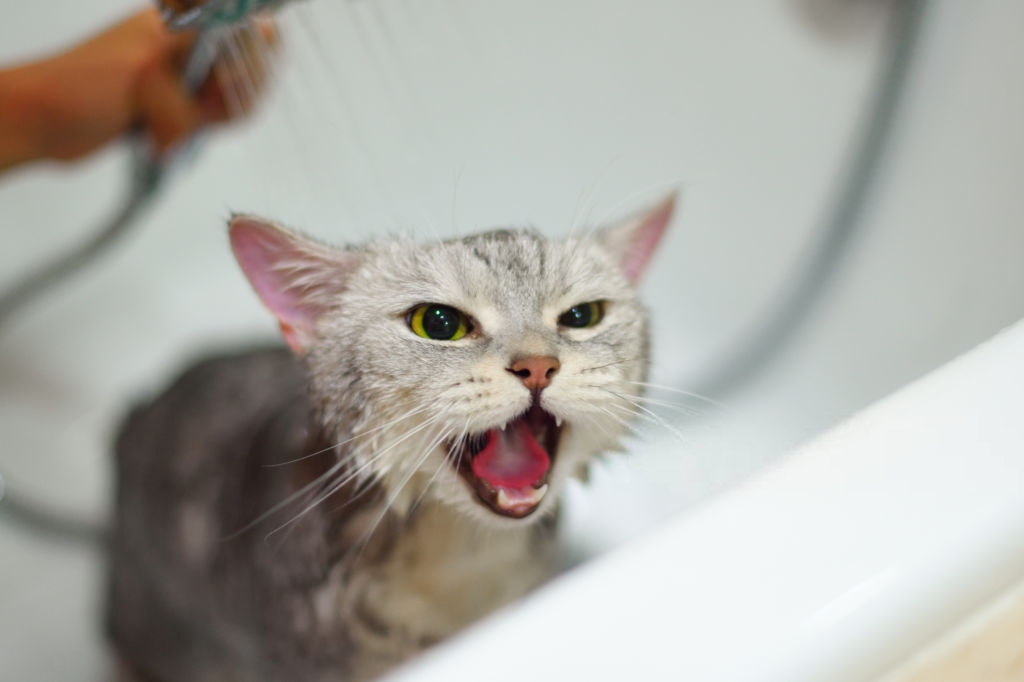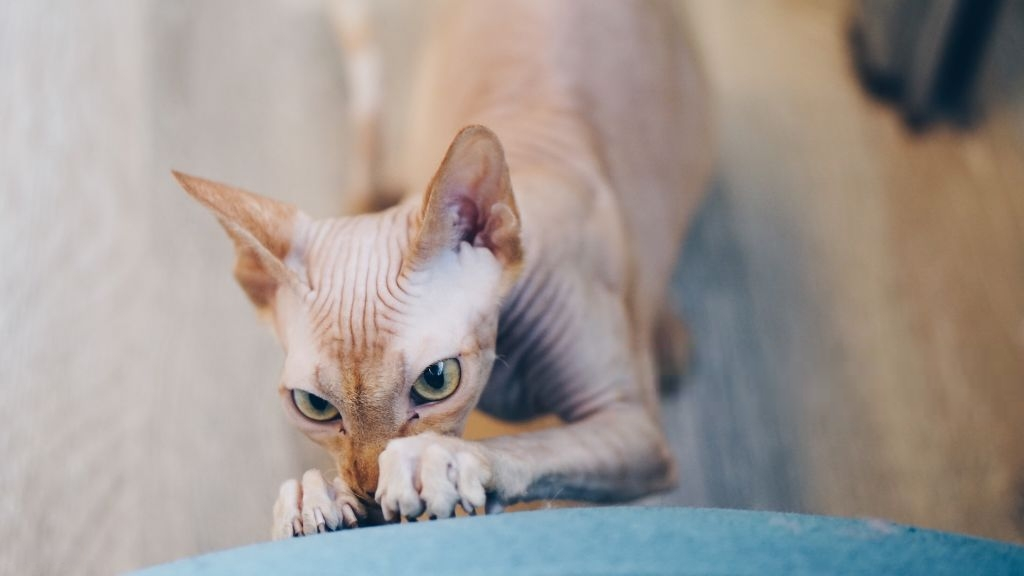Signs Your Cat Is Secretly Mad at You

It can be hard to tell if your cat is keeping her distance because she’s upset or if she’s staying away because, well, she’s a cat and cats are weirdos. But if your furry friend actively avoids you when she’s normally playful or keeps away for longer than usual it can be a sign she’s mad, scared, or anxious. Angry cats will keep their distance when they get confused by, say, a sudden loud voice, quick movements or even an unfamiliar smell. The solution? Let her have her space, she’ll come back when she’s ready.

- Think it’s just dogs that growl? Then you’ve never seen an angry cat. Angry cats can make a wide variety of noises that signal their displeasure, including a throaty growl or a hiss. If your bestie is vocalizing his feelings, start by giving him his space and then slowly do things that will create a positive relationship, like feeding, playing with toys, grooming, or speaking softly. Learning the truth about these little things that make your pet tick will also help replace growls with purrs.
- When she gives you “the look”. If you’re a cat owner, you don’t even have to ask—cats are masters of showing their feelings through their eyes. Cats especially become perturbed when their routine is messed up, like if you’re late feeding them or during daylight savings time. The solution is obvious: Schedule your life around your feline overlord, or find yourself dealing with a very angry cat. We’re kidding—mostly: Cats will do better on a regular, predictable schedule, so do your best to stick to one. :)

- Cats can tell when you’re getting ready to leave them. They may act like they don’t care what you do but start packing your luggage and you may notice your angry cat scowling and glaring at you. This is easy to fix though. Leave a T-shirt or some article of clothing with your scent on it in their bed. And make sure their caretaker gives them extra attention while you are away. All will be well when you return home.

- Hiding is one of the first signs your cat is unhappy or fearful with you or the situation. Resist the urge to try to drag your angry cat out of hiding—it’s a protective reflex and if you force him to socialize before he’s ready he may become aggressive. Best solution is to let her have her space.
- Ears flattened back against the head and slightly sticking out—”like airplane wings”—are a sure indicator your cat is upset. Don’t worry too much but do keep your distance. Your cat cannot address the real reason for their angst, so instead they may nail a human hand that tries to pet when they are upset.
- Rare is the cat owner who hasn’t discovered a “present” in a surprising place. Eliminating on your bed is a typical sign of feline separation anxiety. Even though may appear she’s an angry cat taking out her frustrations on you. In reality, she is using her own scent as a way to cope with her anxiety. They targeting the bed is sort of a back-handed compliment because it smells the most like their beloved—you.

- Has your cat ever begged to be petted and then bit or scratched your hand? This is called “petting aggression” and it’s totally normal. This ‘leave me alone’ bite doesn’t mean he’s angry, but that he wants to control the interaction, and the petting that goes on too long over-stimulates him.
- One of the first subtle signs that your cat is mad at you is when you see her tail placed low, swishing quickly back and forth from side to side. Whenever you see the tail twitch, stop whatever it is you’re doing that is upsetting her, give her some space, and back off for a while until she calms down.

- Your cat hasn’t had an accident since he was a kitten and now all of a sudden he’s peeing all over the house? It’s a sure sign he’s distressed. An angry cat most often urinates on soft surfaces like piles of laundry, sofas, or yes, your bed. It’s important to take care of this problem early before it becomes a habit; talk to your vet if you need help stopping the inappropriate eliminations as it may be a sign of a medical issue.
- When a cat is upset she may eat less or even refuse to eat at all. Often this is a reaction to a new or unfamiliar situation, a change in routine, or a big event at home, like the birth of a new baby. Keep a close eye on this one as it can also be a sign of illness.

- There’s nothing more infuriating than an angry cat that looks you straight in the eye, extends her claw, and then swipes at your new leather couch. Rather than aggression or anger, this is more likely due to your cat marking her territory. Cats are very territorial and this is typically the root of almost every cat behavior case. Cats perceive the house as their kingdom, so things like claw marks on furniture and urine spray on walls are simply fresh boundary lines!















